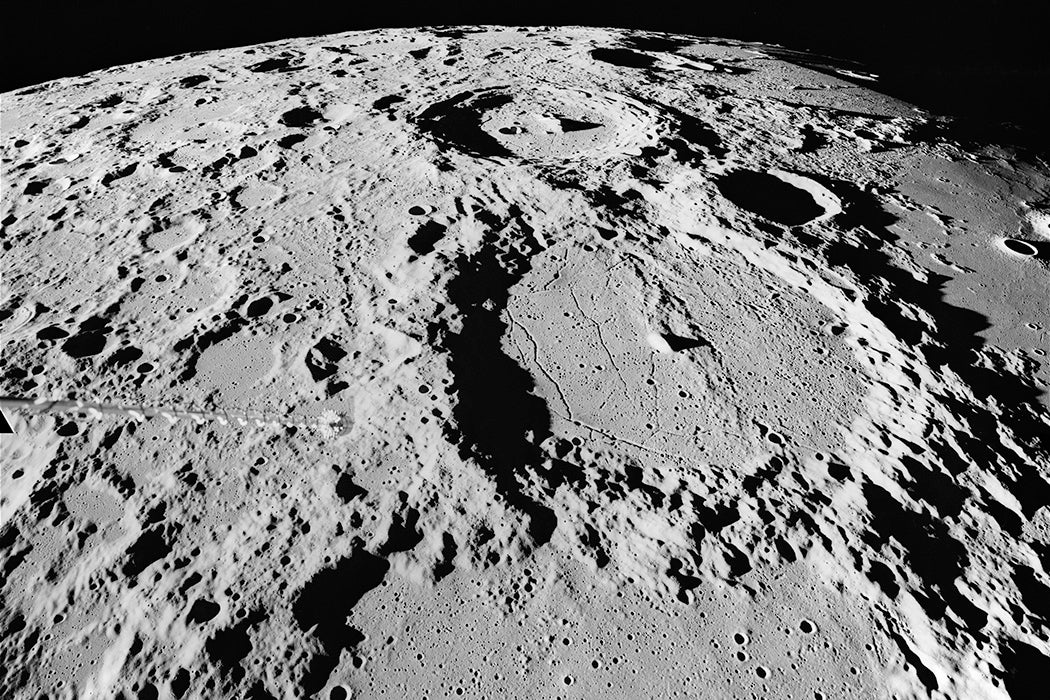In 1958, Soviet astrophysicist Nikolai A. Kozyrev claimed that he found an active volcano on the Moon. If true, it would have had major implications for lunar science and the Space Race. But Dutch American astronomer Gerard Kuiper was skeptical, and quickly went to work evaluating the veracity of Kozyrev’s claims.
Writing about the episode, historian Ronald E. Doel gives us a glimpse into the Cold War scientific world, and argues that Kuiper’s effort teaches us something about the nature of scientific controversies.
Working at the Yerkes-McDonald observatory, Kuiper was one of the few astronomers interested in the Moon in the 1950s. Knowledge was still limited, and scientists disagreed about the extent to which volcanic activity or large impacts shaped lunar features in the past. But most theories ruled out the idea that active volcanoes could continue to exist, including Kuiper’s theory about the formation of the Moon.
When the focus of the Space Race shifted to the Moon, their research became suddenly relevant to national interests. If volcanic activity existed on the Moon, there might be some sort of atmosphere, which would influence spacecraft design. Confirmation of active volcanism would dramatically alter research funding.
Because it would contradict Kuiper’s theory, it could also threaten his status as a lunar expert and the relationship he had developed with federal agencies. From the beginning, his investigation of Kozyrev was deeply personal. It was also incredibly difficult.
Chief among the problems, writes Doel, were “linguistic barriers and very real limitations on mail and telephone calls” during the Cold War. First, Kuiper obtained a copy of Kozyrev’s photographic plate, but he didn’t find anything conclusive. Had Kozyrev made an error or deliberately falsified the evidence?
“Kuiper judged that he needed advice from Soviet colleagues,” Doel writes, “on Kozyrev’s character as an observer and his standing in Soviet astronomy.”
He corresponded with two Soviet astronomers, but he received conflicting information. Then he had an in-person conversation with Soviet astronomer V. I. Krassovsky. Through an interpreter, Krassovsky criticized Kozyrev’s character and his work.
This was enough for Kuiper, who intensified his criticisms of Kozyrev’s claim. He also began evaluating Soviet scientific literature for the CIA. By this point, writes Doel, “Kuiper was in effect operating an intelligence operation through the offices of Yerkes-McDonald.”
Weekly Newsletter
Everything changed when the 1960 International Astronomical Union (IAU) meeting brought Soviet and American scientists together. Kozyrev reiterated his claim in a dedicated lunar session. Then, Leningrad astronomers A. A. Kalinyak and L. A. Kamionko presented an alternative theory. They suggested, Doel explains, “that the spectral evidence was more consistent with cold gasses, possibly released as a discrete gas cloud, than with hot, volcanic outpouring.”
This was consistent with Kuiper’s theories. He examined the plates directly, coming to the conclusion that they were real, and that Kozyrev’s analysis was simply flawed.
Kuiper’s investigation was influenced by his existing beliefs about the Moon as well as complex social and political issues. But ultimately, explains Doel, his opinion was constrained by the evidence. Doel argues that this type of constraint should not be overlooked when thinking about other scientific controversies.
Teaching Tips
- Gerard Kuiper’s original theories on the origin of lunar surface are available via JSTOR: “On the Origin of the Lunar Surface Features” (1954) and “The Lunar Surface—Further Comments” (1955)
- Science published a discussion of the controversy in 1959, noting that Kozyrev had explained his evidence in the February 1959 issue of Sky & Telescope, a development that led the New York Times to describe Kozyrev’s evidence as “incontrovertible”.
- Astronomer Dinsmore Alter issued a brief bulletin summarizing Kozyrev’s discovery announcement in the February 1959 issue of the Publications of the Astronomical Society of the Pacific.







